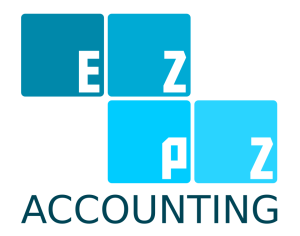Financial Foundations: Building a Solid Accounting Framework for Your Business

Running a successful business in Nevada requires more than just a great product or service. It necessitates a strong financial foundation that can withstand the challenges of the ever-changing market landscape.
This foundation is built upon a solid financial accounting framework. In this article, we will explore the importance of establishing a robust accounting framework for your business and the key steps to take in its creation.
The Crucial Role of a Solid Accounting Framework
An accounting framework is the backbone of your business’s financial management. It is the system through which financial transactions are recorded, tracked, and analyzed. A strong accounting framework provides several crucial benefits:
Accurate Financial Records
A well-established accounting framework ensures that every financial transaction, from sales to expenses, is accurately recorded. This accuracy is vital for generating reliable financial statements and making informed decisions.
Legal and Regulatory Compliance
Businesses are subject to various financial regulations and tax laws. An effective accounting framework helps you remain compliant with these regulations, reducing the risk of fines or legal issues.
Business Performance Insights
With a solid accounting framework in place, you gain access to valuable insights into your business’s financial performance. This information allows you to identify strengths, weaknesses, and areas for improvement.
Smart Decision-Making
A clear understanding of your financial position empowers you to make informed decisions. Whether it’s planning for expansion, managing cash flow, or optimizing expenses, a well-structured accounting framework guides your choices.
Key Steps in Building Your Accounting Framework
A framework can help you not only develop your accounting processes but improve your work-flow. This is important if you are in a growing business or a business that has a lot of requirements on the financial and accounting side. It is not always easy to set up an accounting framework, but there are different steps you can take to make it easier.
Choose an Accounting Method
The first step is to choose between cash accounting and accrual accounting. Cash accounting records transactions when money changes hands, while accrual accounting records transactions when they occur, irrespective of cash flow. Consider your business type and goals to determine which method suits you better.
Set Up Chart of Accounts
Develop a chart of accounts that categorizes your business’s financial transactions. Categories may include revenue, expenses, assets, liabilities, and equity. A well-organized chart of accounts simplifies tracking and reporting.
Select Accounting Software
Modern accounting relies heavily on technology. Choose accounting software that aligns with your business’s needs. Cloud-based options often provide real-time access to financial data and streamline collaboration.
Record Transactions Regularly
Consistency is key. Record financial transactions regularly to maintain accurate records. This includes invoices, expenses, payroll, and any other financial activities.
Reconcile Bank Statements
Regularly reconcile your bank statements with your accounting records. This process helps identify any discrepancies and ensures your records align with actual bank transactions.
Generate Financial Statements
Use your accounting framework to generate financial statements such as the income statement, balance sheet, and cash flow statement. These statements provide a comprehensive view of your business’s financial health.
Budgeting and Forecasting
Incorporate budgeting and forecasting into your accounting framework. Create financial projections based on historical data and market trends to guide your business decisions.
Regular Reviews and Audits
Periodically review your financial records to identify errors or discrepancies. Conducting internal audits ensures the accuracy of your financial information.
Seek Professional Help
If accounting is not your expertise, consider hiring an accountant or consulting a financial professional. Their insights can help you set up a more sophisticated accounting framework tailored to your business needs.
Maintaining and Adapting Your Accounting Framework
Creating an accounting framework is just the beginning. Regular maintenance and adaptation are essential to ensure its effectiveness:
Stay Updated with Regulations
Financial regulations and tax laws evolve. Keep up with the latest changes to ensure your accounting framework remains compliant.
Regularly Review Processes
Periodically review your accounting processes. As your business grows, your needs may change, requiring adjustments to your framework.
Employee Training
If you have a team handling financial tasks, ensure they are well-trained on the accounting framework’s procedures and software.
Embrace Technological Advancements
Technology is ever-evolving. Embrace new accounting tools and software that can enhance the efficiency and accuracy of your framework.
Conclusion
Building a solid accounting framework is a cornerstone of a successful business. It provides the foundation for accurate financial records, regulatory compliance, informed decision-making, and business growth.
